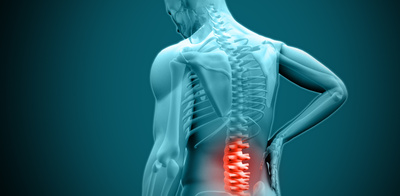
Driving & Arthritis: Some Awesome Tips to Help Pain and Make Driving More Comfy
Driving a car comfortably and safely is essential for many individuals. You can enjoy driving your vehicle for various reasons, including while going to work or for your leisure purposes. However, arthritis may take a huge toll on your ability to drive the car effectively. This article outlines essential things to do when arthritis takes a toll on your driving ability.
According to Gemma H, rheumatoid arthritis has generally affected the most important part of her life, the ability to move around with the car. The condition restricts her from getting to essential places like doctor appointments, local stores, or her job place as a daycare provider. In addition, it deprives her of the safe space the car provides.
Vehicles provide the appropriate shield from the world or environment. Sometimes it acts as a hideout place when you’re in pain, as you may have everything you need for relaxation in the car. For instance, you can have your pain medication, snacks, magazine, and even your phone charger. Additionally, you can soothe your joints by enhancing the car’s temperature to extra hot after your routine work.
Arthritis hinders your ability to drive, but it’ll be essential to learn how to drive with the condition. Canadian researchers conducted a study on arthritis and mobility and published it in the ‘Journal of Occupational Therapy. The findings revealed that vehicles become essential tools to maintain mobility, social participation, and independence after developing this condition. Nevertheless, most individuals find it challenging to drive when having this condition due to reduced functions, exhaustions, and pains associated with the medical condition.
Driving is a complicated task that involves various activities and things to maneuver. Various researchers revealed that this task involves an interaction of your motor, cognitive and visual skills to drive effectively and even achieve different basic maneuvers like steering and braking. Thus, a slight change in any of the above abilities affects your driving safety and efficiency.
Reports show that approximately more than half of the individuals with rheumatoid arthritis have difficulties driving. Furthermore, a ‘Journal of Rheumatology’ survey reveals that more than 700 rheumatoid arthritis patients develop driving challenges.
Additionally, researchers had a further survey on the problems or issues the RA patients deal with while driving. The findings revealed that more than two-thirds of the patients had specific navigating issues. Approximately half of this population experienced trouble boarding or getting out of the vehicle. One-third experienced backing up problems, and a quarter of this population revealed they had problems checking the right and left at a road intersection.
The most astonishing finding is that most study participants had less than one disability index. This index reveals that even individuals with a lower functional impairment or issues can still experience difficulties driving. Thus, any little arthritis complication may lead to noticeable problems.
The National Institute of Health (NIH) reveals several ways arthritis can affect your driving skills. Below are some of the effects of arthritis on your driving needs:
1. Stiffness and joint pains
It’s a problem that makes it hard to achieve various driving functions. For instance, they hinder your ability to check your blind spot or look back, making it hard to turn the vehicle’s steering wheel faster or braking safely.
2. Effects of arthritis medication
Some arthritis medication or treatment may cause dizziness, sleepiness, or other side effects. These medications' side effects may impair your ability to drive safely.
3. Fatigue and mental fog
The fatigue and mental fog resulting from the condition slows down your reflexes and reaction times while driving.
With these effects of arthritis on driving, what are the best practices or tips to drive comfortably and safely when suffering from the condition? Physical therapist Joe Tatta, Integrative Pain Science founder, advises that preparation is key to enhancing your comfort and safety while driving. This article outlines tips that you’ll need to include in your preparation:
Drive Comfortably and Safely
Get the correct type of vehicle
Experts advise against using manual transmissions, as they aren’t a good alternative for arthritis patients. The NIH recommends choosing an automatic transmission car with power brakes, large mirrors, and power steering.
Adjust your car properly
Tatta reveals that after getting your car, the first thing you need to do is adjust the seat, the rear-view, and side mirrors appropriately. It’ll be good to angle them correctly, minimizing the contorting and straining yourself while driving.
Have refresher classes
After developing arthritis, especially in the advanced stage, most individuals feel like they won't drive again. Importantly, you'll need more practice to enhance your driving ability, even for the basic driving skills, such as changing lanes or backing up. Therefore, it’ll be imperative to choose refresher classes from an experienced and certified driver rehabilitation specialist. These classes will help you understand all the mental, mechanical and physical adjustments you’ll need to enhance safe and comfortable driving. In addition, you’ll learn how to use different adaptive devices in your car.
Include break time when driving for longer distances
On some occasions, longer driving durations makes things more difficult for individuals with arthritis. Therefore, it’ll be essential to have numerous breaks when having long drives. According to Mark P, a psoriatic arthritis patient from Atlanta advises that you can stop for coffee or snack at your favorite coffee shop. The break and time of the car and walking prevent stiffening up when you get to your workplace.
Register and get a disabled parking permit
According to Gemma, having accessible parking is essential to differentiate between a strainful and successful shopping trip. However, most individuals don't think it's necessary because they feel that they can move and walk past everyone while shopping. Getting a disabled parking permit or placard will be one of the wisest decisions to make. Federal and state authorities have made it very simple and faster to acquire a handicap parking permit or placard as long as you qualify.
Understand the time when shouldn’t be driving
With care and preparation being the appropriate mechanism to enhance a safe and comfortable drive with arthritis, we’ve times that the condition makes it very difficult to drive. It’ll be nice to check your conditions and be honest with factors like mental fog, exhaustion, and physical capability. Importantly, have a list and contact of individuals you can request for help whenever you’re in a bad flare-up. Alternatively, you can consider using a rideshare service to provide proper rest to your joints.
Take Full Control of Your Braking and Steering
Get a steering wheel offering the best grips
Arthritis may primarily affect your hands’ joints causing difficulties in handling the steering wheels. A physical therapist from the Panorama Orthopedics Center, Tom Ryan, advises that it’ll be good to get a steering wheel cover with grippy materials, such as silicone or rubber, as it acts as a lifesaver. The grippy steering wheel helps to reduce the pressure on your hands, helps prevent dangerous slips, and plays an integral role in lessening your grip strength. It’ll be imperative to understand your steering wheel size before ordering the one that suits your needs.
Use a spinner knob
These are special attachments that you can install on your car’s steering wheel to make it easy to turn without needing too much grip or while using less strength. We’ve got different options and designs that suit various hand disabilities. Importantly, before choosing one, it’s good to research the different spinner knobs at Mobility works and select the one that suits your needs.
Install adaptive foot or hand controls
Foot and hand adaptive controls are necessary features to install in your vehicle when you’ve got severe arthritis affecting your legs and feet. According to Tatta, these features reduce pain and enhance mobility while driving. Notably, you must purchase customized attachments to enhance the best experience. The adaptive foot and hand controls allow you to have control of everything in your car, from the brake pedals to the gas system, using your hands.
Suppose you’ve got a limited range of motion for your legs or you develop weakness in the legs, installing customized foot controls will be the best alternative. These attachments are flexible to allow easy adjustments by either moving or lengthening the pedal to suit your particular situation or needs. You get more information on these attachments from your state’s National Mobility Equipment Dealer Association (NMEDA).
These mobility controls play a considerable role in making individuals suffering from various conditions or severe disabilities like neuromuscular diseases or amputations stay independent and active. Nevertheless, while considering these attachments, it’s imperative to understand that you can’t fix them yourself. Especially for starters, you must seek help from a professional to fix these controls, which sometimes might be pretty expensive, ranging between hundred dollars to thousands of dollars. After purchasing, you’ll have to add the installation, mandatory evaluation, and training costs. If you’re looking for the appropriate way to check authorized dealers, affordable classes, and installers, you can contact NDMEA or visit their site.
Enhance Your Seat
Choose a heated chair cover
Sitting on a heated, padded chair cover is fundamental when looking to have a comfortable drive. The seat generates some heat, which is essential for loosening your muscles & joints, while the paddling plays a vital role in providing support. According to Stan H., of Grand Rapids in Michigan reveals that after getting osteoarthritis in his spine and knees, He couldn’t work on his long-haul trucker task without the unique seat cover.
Try a pillow with a lumbar-support
Ryan reveals that choosing a lumbar support pillow is the best option for individuals with hip or back pains to make a difference while driving. You can place the half-moon-shaped pillow at your lower back to provide and support spinal alignment and have a proper posture.
Choose an ergonomic pillow
If you’ve got tailbone pain, hip or sciatica issues, Ryan reveals that choosing an ergonomic seat pillow, which most individuals refer to as doughnut, will be imperative. These pillows help to relieve pressure in these body parts while driving. Significantly, check for a pillow that comes from gel or memory foam to help it offer firmer support and keep its shape for long compared to the traditional padding. Furthermore, Rachel R., a rheumatoid arthritis patient, reveals that carrying your butt pillow will also help to relieve you from these pains.
Install a center console armrest
When manufacturing cars, most manufacturers put armrests that aren't practically suitable for individuals that arthritis has affected their shoulders, elbows, or wrist. These armrests are low, very hard, and narrow for these patients. The best remedy or solution for this scenario is to install a luxe padded armrest, which you can strap over your existing armrest. Michelle A., lupus from New Mexico, reveals that this armrest provides much comfort and contains an extra pocket to minimize the straining you can incur while reaching for things around.
Use strategically placed towels
When driving a borrowed or hired car, you won’t have the resources or permission to invest in appropriate specialized seats or adjusters. With the limited options to customize your vehicle to suit your needs, rolled towels offer a better alternative. According to Tatta, you can put a folded or rolled bath towel in strategic positions, preferably behind your shoulders or back. Alternatively, you can use rolled hand towels under your elbows or beside your neck to provide extra support and reduce pressure.
Use Other Adaptive Devices to Trick out Your Rides
Purchase a portable grab bar
Apart from being useful in your bedroom or bathroom, grab bars are essential for your driving needs when having arthritis. A portable vehicle grab bar refers to a small bar enough to fit in a glove box or purse and is very easy to use. You can install it by wedging the grab bar in the latch hole at the door’s frame, making it safer and effortless to get in and out of the vehicle.
Install a supportive handle
You can enhance the comfort by trying the hanging support handle if the small grab isn’t enough. Ryan reveals that this handle provides you with steady support and a wide grip when you’re boarding or getting out of your car. The straps come with lightweight and adjustable features for your height, and you can pack them easily when you need them.
Purchase key topper with grips
After dropping them in your car, it becomes tough and embarrassing to pick your keys, but Michelle reveals that choosing silicone key covers helps prevent these embarrassments and difficulties. Choosing grippy key toppers lets you hold the slippery parts firmly while getting the keys in or out of the ignition. Additionally, the grippy parts are essential to help you find the key easily after slipping from your arm.
Consider using a key tuner
If arthritis has affected your hands, getting the key in your vehicle’s ignition and turning the key in the ignition is very challenging and more painful. Ryan reveals that using the appropriate car key tuner is vital to make it easier. The key tuner makes it effortless to turn the keys in the ignition and provides a much larger surface for holding on.
Have a seat belt ID
Medical experts reveal that individuals with arthritis may have a complicated medical history. Anca Askanase, MD at Columbia University Medical Center, advises that you need to consider your medical history in case of an emergency or accident to help enhance faster recovery. Importantly, you’ll need the seat belt ID to enable the responders or medical team to understand your medical history while providing the appropriate care. It’s a simple belt ID band that designers attach on the seatbelt crossing your chest, allowing responders to see your medical information. In addition, you can customize by adding essential medical details like medications, surgeries, or blood type.
Have a buckle band on the seat belt
Most arthritis patients feel much pain and frustration when trying to fish out or remove the seat belt receiving end after it gets twisted or wedged in the seats. Ryan reveals that you make it easier by having a buckle band and sliding it around your seat belt’s bottom part. The buckle band helps to keep the belt in a proper and upright position, making it easy to remove by clicking. In addition, the band has a stretchy silicone that allows fitting in most seatbelts and makes it more comfortable to have on it. According to Mason M., an ankylosing patient, putting these seat belts in your car is not a luxury but a necessity.
Keep the unbuckler handy
Ryan advises that it’ll be imperative to have the UnblockMe handy when traveling with kids in your car. This safety device slides over your child’s seat belt release button; thus, allowing effortless opening of the belt with less pain. Experts advise keeping it away from the kids after using it, as they’re quick learners and can become loose, making it dangerous for your safety while driving. You can also incorporate the BuckleBee; it performs similar functions but makes releasing your vehicle’s traditional seat belts very easy.
Take Good Care of Your Health
Get proper treatment for your disease
According to Dr. Askanase, it becomes hard to drive when you‘ve got more swelling and pain. Therefore, it’ll be imperative to maintain your joint’s health. The treatment should include taking an anti-inflammatory diet, having regular sleep & exercise, and taking your prescribed medications. Additionally, you should follow any recommended occupational or physical therapies properly.
Importantly, you’ll need to notify your doctor if you experience more driving difficulties due to unrelenting stiffness in the fingers or reduced neck flexibility. These signs may signify that the current treatment is ineffective, and you may need an alternative or dosage alterations. Jed F., an ankylosing spondylitis patient, reveals after talking to the doctor about the symptoms, the doctors advised him to become aggressive with the treatment. The severe symptoms restrict turning your head, thus limiting the ability to look at the blind spots, which is very dangerous while driving. Choosing a biological therapy is a great move to relieve you from these symptoms and enhance your driving ability.
Exercise daily
Exercising regularly or daily is very important for your driving needs. It'd help if you had the strength and high levels of conditioning and flexibility to operate and drive your car effectively for more extended periods. Dr. Askanase reveals that exercising daily is helpful to maintain the appropriate fitness. Tatta adds that it's vital to exercise muscles essential for driving, especially the feet and hands.
Have some stretches
It’ll be beneficial to stop driving and take a quick break after you feel your muscles cramping, fatigue kicking in, or having intense pains. It’ll be good to step out of the car during the break, have some refreshments, and do gentle exercises like stretches. Stretches are vital to keeping your blood flowing through the joints to relieve the pain and muscle cramping. Marks reveals that getting out of his car and stretching exercises for about 10 minutes make a considerable difference while driving.
Wear compression socks
Apart from providing extra support, these socks come with appropriate designs and features that prevent blood pooling in the legs and feet. Amy P, a patient with fibromyalgia and arthritis, reveals that tight compression socks offer a safe and comfortable drive for more than one hour. In addition, these socks come in a wide range of patterns and colors, which makes it fun to wear them while on your journey.
Swap your shoes out
Bethany L., a rheumatoid arthritis patient in Australia, discovered that having a 30-minutes commute with the same shoes was miserable on her ankles. Every time he pushed the gas, he felt intense pain. However, due to footwear differences, he never had the same problem when going for hikes. The hiking boots have exceptional and firm ankle support that the work shoes he used for driving lack. The appropriate solution for this scenario is to wear the boots while driving and change to shoes upon reaching the workplace.
Learn various relaxation exercises
According to Susan Blum, MD, MPH at Mount Sinai, New York, your body will feel tense if you also feel tense while driving through bad weather and traffic. The tension and stress manifest in various forms like gritted teeth, headaches, gritted teeth, clenched hands, and tight shoulders. These conditions can exacerbate arthritis symptoms; thus, it’ll be good to get the appropriate mechanisms to calm yourself down. The doctors say that deep and slow breaths can be of greater help.
.png)





